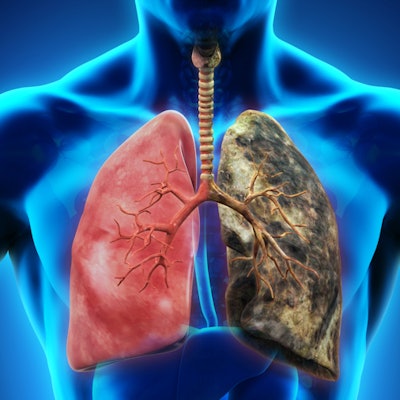
More than 70% of U.S. cancer centers offer onsite CT lung cancer screening, but this high availability drops off substantially for sites serving racial minorities and rural residents in Puerto Rico, according to an article published online February 25 in the Journal of the American College of Radiology.
Prior studies have reported a sharp increase in the number of CT lung screening sites in the U.S. in recent years, from 203 sites in 2014 to 2,423 sites in 2017, noted first author Dr. Ruth Carlos, from the University of Michigan Health System, and colleagues. Yet various investigative teams have suggested that gaps remain in screening availability for racial minorities and individuals living in rural areas.
To evaluate the status of CT lung screening specifically among cancer centers, the researchers assessed the availability of screening services at institutions associated with the National Cancer Institute Community Oncology Research Program (NCORP) in 2017. The NCORP comprises nearly 1,000 private community practices, safety net hospitals, and health networks focused on cancer care in the U.S. and neighboring territories including Puerto Rico.
Among the 211 institutions that participated in the group's survey, the vast majority (73%) offered onsite CT lung cancer screening. Out of all 154 sites that offered screening, 69.5% included radiologists in the management of their CT lung screening services, mostly as part of a multidisciplinary team.
In addition, 63.6% of the institutions offering CT lung screening participated in the American College of Radiology (ACR) Lung Cancer Screening Registry, although only 47.4% were accredited as an ACR Designated Lung Cancer Screening Center.
The availability of CT lung screening services decreased dramatically for U.S. and Puerto Rican institutions classified as minority or underserved sites (i.e., treating at least 30% racial and ethnic minorities or rural residents). Minority or underserved sites were also considerably less likely to have a radiologist involved in screening service management, compared with nonminority sites.
| CT lung cancer screening at U.S., Puerto Rican sites by population makeup | ||
| Odds ratio for sites serving less than 30% racial minorities | Odds ratio for sites serving at least 30% racial minorities | |
| Onsite CT lung cancer screening | 1 | 0.33 |
| Radiologist involved in service management | 1 | 0.92 |
However, a subanalysis excluding the Puerto Rican institutions revealed no statistically significant drop-off in CT lung screening availability at the minority and underserved screening sites in the U.S. In fact, none of the seven practices in Puerto Rico offered CT lung screening -- highlighting likely restrictions to screening access in the territory.
Marked increases were noted in CT lung screening availability at safety net hospitals (odds ratio [OR], 2.91), critical access hospitals (OR, 3.71), and hospitals within large health networks (OR, 6.67), compared with independently owned hospitals. Yet radiologist involvement was generally not as high at these large institutions as it was at health maintenance organizations and hospitals that were university or publicly owned (OR, 2.8).
The high availability of CT lung screening services at cancer sites does not necessarily guarantee high use, the authors wrote. But there is hope that "radiologist participation in implementation and management may improve patient participation where lung screening services are available," they concluded.




















